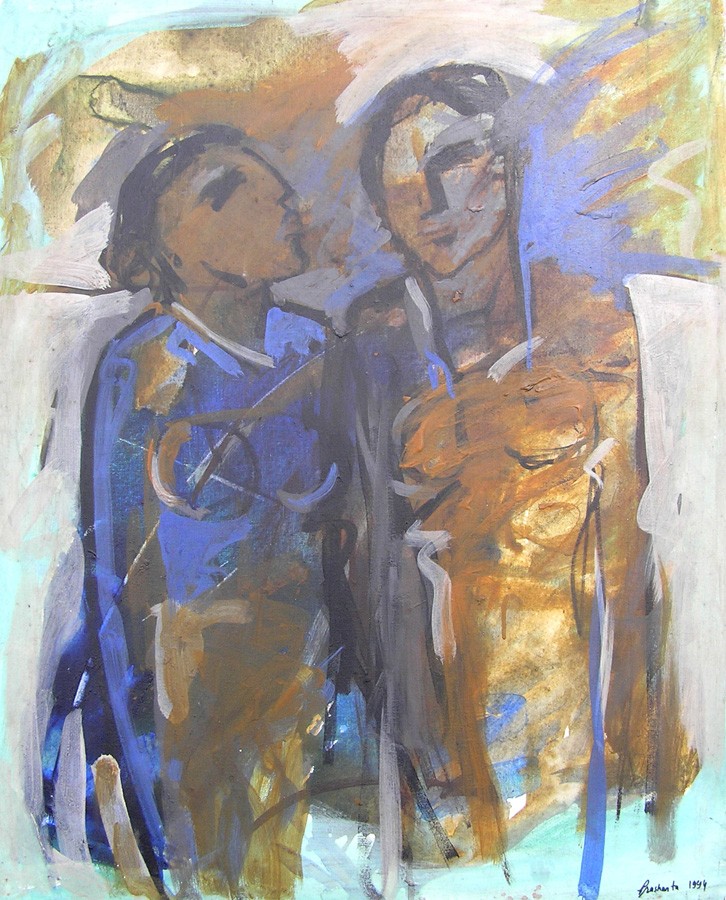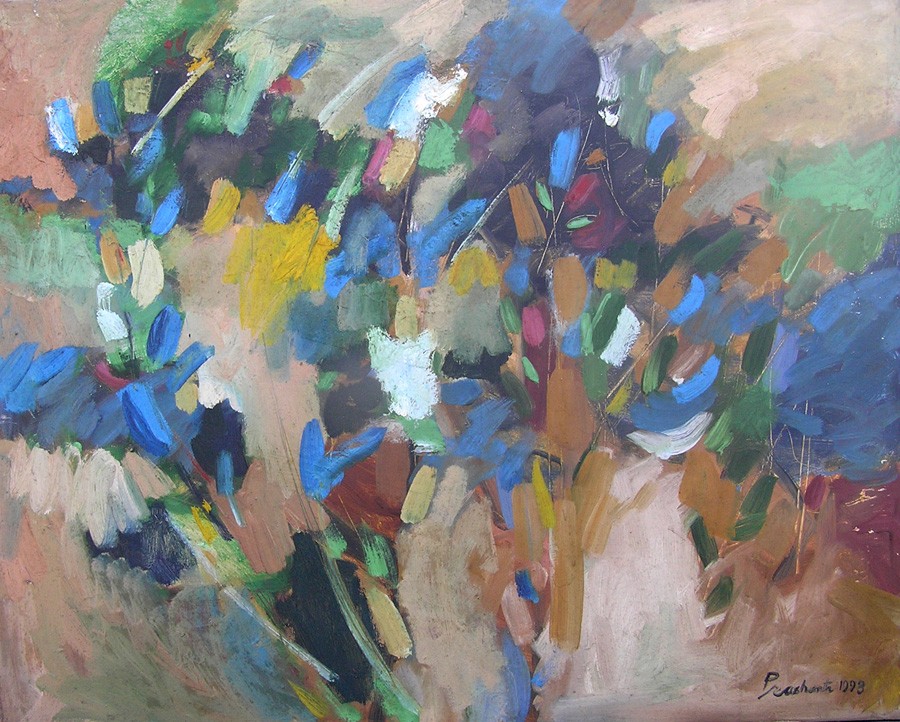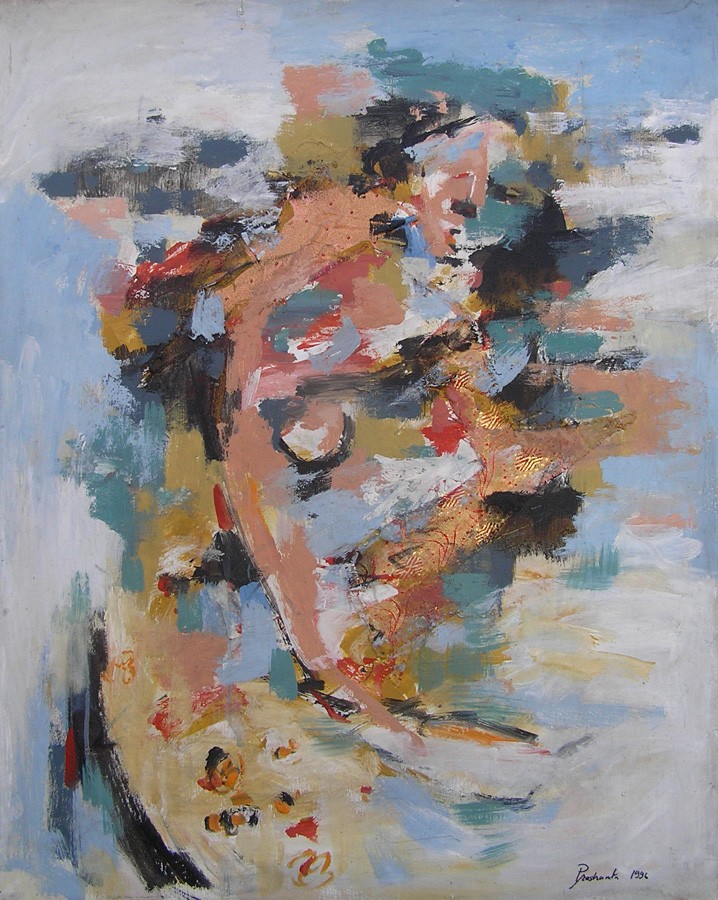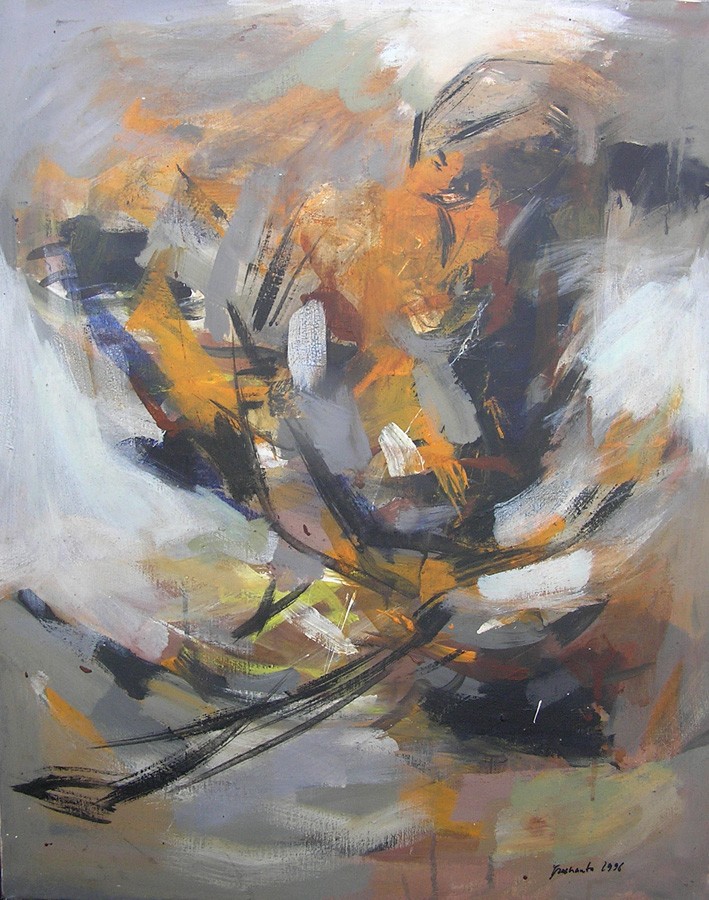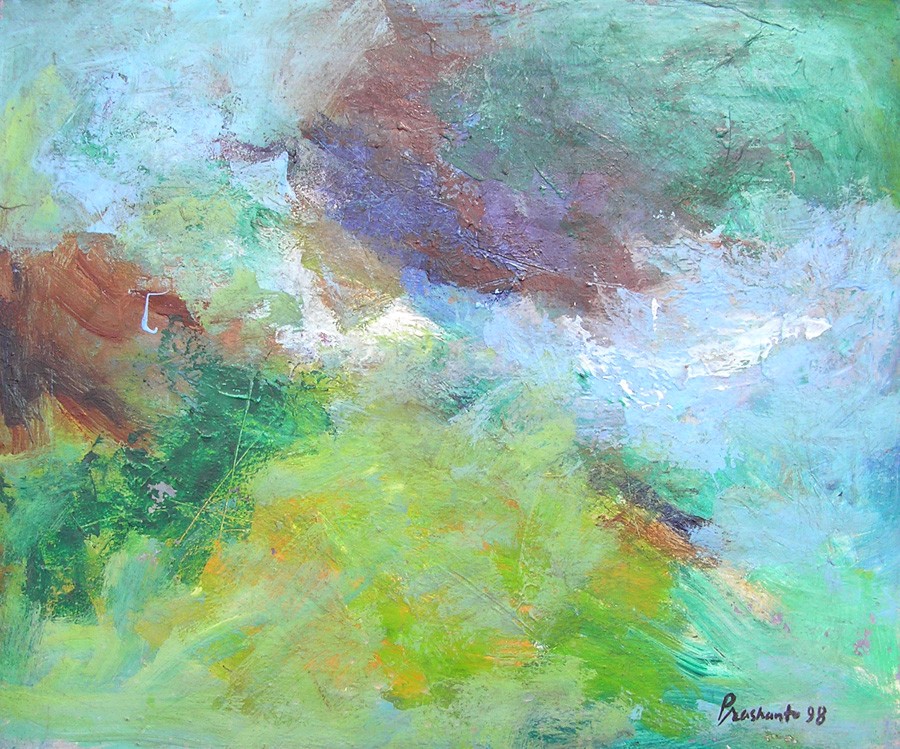Prashanta Shrestha

Prashanta Shrestha’s paintings do not capture the objects, events and people of the external world as we see them in the real world but express his own inner emotions and feelings through unusual images and altered colours. Distinct and bold contours and perceptible textures give the works gravity and strength. Spontaneous gestures of brush strokes make the compositions dynamic and musical. Out of seemingly abstract shapes and images, the human figures come forth in playful manner. There is the play of absence and presence of the figures. Despite the difficulty in distinguishing the gender of the human characters, the female figures are recurrent in their distinct mood.
Prashanta Shrestha’s paintings do not capture the objects, events and people of the external world as we see them in the real world but express his own inner emotions and feelings through unusual images and altered colours. Distinct and bold contours and perceptible textures give the works gravity and strength. Spontaneous gestures of brush strokes make the compositions dynamic and musical. Out of seemingly abstract shapes and images, the human figures come forth in playful manner. There is the play of absence and presence of the figures. Despite the difficulty in distinguishing the gender of the human characters, the female figures are recurrent in their distinct mood.
He has made thorough study of women. Voluptuous body, bulging breast, big elongated eyes and sinuous limbs make his women bold and monumental. He captures such women in their private moments, in which they are observing themselves with rapture and satisfaction. On the contrary, some of them are pensive, meditative and lonely. It is maybe due to restriction imposed upon them by the patriarchy. But this is all suggestion in simplified lines and colours. Prashanta does not make concrete representation, yet, gives us clues so that we can construct the complete figures in our imagination.
The women also appear busy in their daily chores- carrying commodity-loaded baskets on their back, gardening and so on. They are attired in Newar costumes- sari, blouse, bangles, necklace and red tika on their forehead- carving the identity of the ethnic community. Some women appear in group with their informal chit-chat. Likewise, some women are portrayed embracing their lovers, strolling hand in hand and sharing secret moments. Nevertheless, all these values are implied and covert to be fully developed in the mind of the viewers due to the employment of abstract expressionism. The works seem to be open-ended and plural as they are on process.
Prashanta also captures landscapes of villages and mountains. He prefers to represent landscapes in aerial perspective. However, it is hard to figure out the recognizable images. His works demand the viewer’s participation and imaginative exercise to assimilate them within oneself. As the landscapes move toward abstraction, they provide more comfort, for the viewers are free from the tyranny of referring colours and images to the objects of external world. They have presentational immediacy. However, in subtle manner, the misty valleys, foggy hills, snowy mountains, windy storms and tumultuous oceans come forth with ease. And they appear and disappear in their own way. Colour compositions, textures and gestures are more aesthetic than the images and figures.
Date of Birth : 1968, Kathmandu
Art Education :
Bachelor’s Degree in Fine Arts, Fine Arts Campus, Kathmandu, Nepal
Solo Exhibitions :
1989 : Gallery Palpasa, Kathmandu
1994 : J Art Gallery, Kathmandu
1995 : Sirjana Art Gallery, Kathmandu
1995 : Sirjana Art Gallery, Kathmandu
1996 : NAFA Art Gallery, Kathmandu
Group Exhibitions :
1989 : Inter Campus Exhibition, Fine Art Campus
1990 : Two Men Show, Gallery Palpasa
1990 : Gild Child in Nepal, UNICEF
1990 : Graphic Print Show, Goethe Institute
1991 : 5th Asian Art Exhibition in Biennale, Dhaka
1992 : Nepalese Children, organized by CWIN
1992 : T.U. Day Exhibition, Fine Arts Campus
1992 : Human Happiness, Sirjana Art Gallery
1992 : X’mas Collection, Sirjana Art Gallery
1993 : Art for Relief Disaster, Sirjana Art Gallery
1993 : X’mas Collection, Sirjana Art Gallery
1993 : 6th Asian Art Exhibition in Biennale, Dhaka
1994 : Group 37, Nepal Art Council
1995 : Nepal-Bangladesh Art Camp Exhibition, Sirjana Art Gallery
1996 : 26th National Art Exhibition, NAFA
1997 : 8th Asian Art Exhibition in Biennale, Dhaka
1997-98 : National Art Exhibition, NAFA
1998 : Atelier-12, CSI Gallery, Durbar Marg
Awards :
1996 : Contemporary Consolation- 26th National Art Exhibition, NAFA, 1996
1989 : Commendation Prize – Cartoon Competition, Royal Nepal Academy

